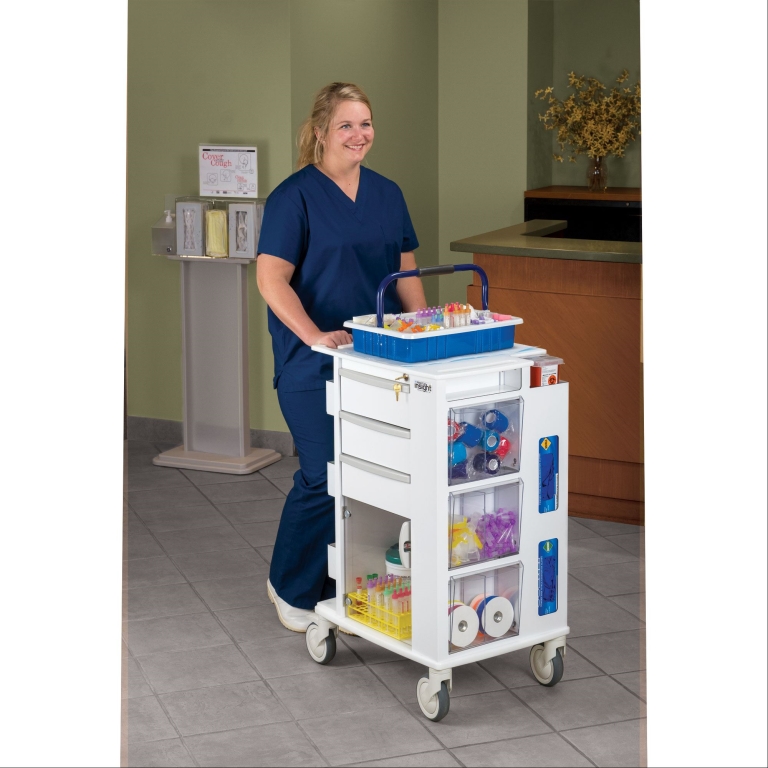**Title: The Ultimate Guide to Phlebotomy Training Arms**
**Introduction:**
Phlebotomy training arms are indispensable tools for aspiring phlebotomists looking to hone their skills in blood collection techniques. These training arms simulate the experience of drawing blood from a real human arm, allowing students to practice and perfect their technique in a safe and controlled environment. In this comprehensive guide, we will delve into the benefits of using phlebotomy training arms, the different types available on the market, and practical tips for using them effectively.
**Benefits of Phlebotomy Training Arms:**
– Provide a realistic simulation of the human anatomy for hands-on training
– Allow students to practice venipuncture and blood collection techniques repeatedly
– Help build confidence and competence in performing blood draws
– Reduce the risk of accidental needle sticks and injuries to patients
– Offer a safe and controlled environment for learning and skill development
**Types of Phlebotomy Training Arms:**
1. Basic Training Arms: These models are designed for beginners and feature essential veins for practice.
2. Advanced Training Arms: These models offer more realistic vein structures and may include additional features such as blood flow simulation.
3. Pediatric Training Arms: These models simulate the veins of pediatric patients, providing valuable experience for drawing blood from children.
**Practical Tips for Using Phlebotomy Training Arms:**
1. Practice proper hand hygiene and infection control measures.
2. Position the training arm at the correct angle for venipuncture.
3. Locate the vein using palpation and visualization techniques.
4. Select the appropriate needle gauge and insertion angle for the procedure.
5. Perform the venipuncture technique smoothly and confidently.
6. Practice withdrawing blood into the collection tube and applying pressure to the puncture site.
7. Evaluate the success of the procedure based on blood flow and specimen quality.
8. Clean and disinfect the training arm after each use to maintain hygiene.
**Case Study:**
Sarah, a phlebotomy student, used a phlebotomy training arm to improve her blood draw technique. With regular practice and guidance from her instructor, Sarah gained confidence and skill in performing venipuncture. She went on to successfully complete her phlebotomy training program and secure a job in a healthcare setting, where her proficiency in blood collection using a real arm was greatly appreciated.
**Firsthand Experience:**
“I found using a phlebotomy training arm to be incredibly beneficial during my phlebotomy training. It allowed me to practice and refine my technique without the pressure of working on a real patient. The realistic simulation of veins and skin texture provided valuable experience that I could apply in a clinical setting. I highly recommend incorporating phlebotomy training arms into phlebotomy education programs for enhanced skill development.”
**Conclusion:**
Phlebotomy training arms are invaluable tools for phlebotomy students to gain hands-on experience in blood collection techniques. By practicing on these realistic simulation models, students can build confidence, competence, and proficiency in venipuncture procedures. With the right training arm and guidance, aspiring phlebotomists can become skilled professionals ready to excel in their careers. Incorporate phlebotomy training arms into your training curriculum for a comprehensive and effective learning experience.
phlebotomy training arms are essential tools for phlebotomy education, offering a safe and realistic simulation of blood collection procedures. Incorporating these training arms into training programs can greatly enhance students’ skills and confidence in performing venipuncture. Whether you are a novice phlebotomy student or an experienced healthcare professional looking to refine your skills, phlebotomy training arms are a valuable investment in your professional development.
